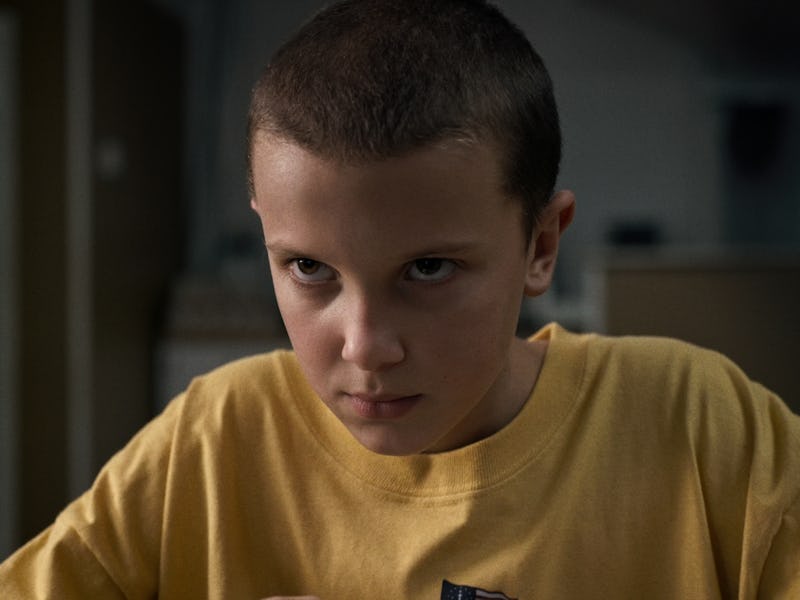Trust Me, 'Stranger Things' Was Influenced by 'The Cell'
You've heard about the Spielberg and John Carpenter homages, but what about Tarsem and JLo?

You’ve heard the raves, and hopefully witnessed it for yourself: Netflix’s new Winona Ryder-starring series Stranger Things is a high-concept, deadly smart love letter to 1980s science fiction. There’s no way to dispute this. Some of its detractors — enemies of fun, largely — malign it for this reason. Does contemporary culture really need more nostalgic art? Shouldn’t it be chasing some bold new aesthetic?
But if critics calms down and don’t err too political, it’s easy to accept that Stranger Things quotes heavily while retaining its artistic integrity. It also manages to subvert tropes and often be truly surprising.
Also, its worth noting that the show’s inspirations are far from limited to the 1980s. I’m not just talking about the obvious X-Files-esque tropes — come on, MK Ultra? — and conspiracy-theory-inspiring ending. No, Stranger Things also creates resonances with some far-more-unexpected art, a lot of which you probably haven’t thought about since around the time you bought your Enhanced CD of Chocolate Starfish and the Hot-Dog Flavored Water.
That’s right: Stranger Things has some serious similarities to Tarsem Singh’s psych-horror film The Cell. No, I’m not talking Cell, forgetful millennials; I’m talking the ill, turn-of-the-millennium blockbuster head trip with Jennifer Lopez.
As Eleven journeys into the Upside-Down in Stranger Things, fans of the Scarlett Johansson-starring, glacial android-horror film Under the Skin may recognize the similarity between the stark black backdrop that creates the “void” of that film and the isolation-tank nightmare.
The murderous 'void' in "Under the Skin" (2013)
But the actual images she sees there recall The Cell’s alternate universe — the inside of serial killer Carl Stargher (Vincent D’Onforio) mind— more than anything I’ve ever seen outside of a Marilyn Manson video.
It’s not just the setup. Eleven in the isolation tank, with eyes covered, creates resonances with the image of J Lo’s child psychiatrist Catherine Deane — levitating in a body suit that looks like a Twizzler, with a hanky over her face — entering the warped, horrific universe of Stargher’s mind with the help of totally-nonsensical technology.
Eleven, like Deane, cautiously paces through her unholy world like she’s wandering through Myst. As in The Cell, there are haunting auditory reflections in the Upside-Down. El creeps up upon creepy tableaus gradually. A specific, dominant monster always threatens to appear in any corner, and always does.
When [SPOILERS!] Joyce and Hopper find Will in the Upside-Down, he has a horrible, tapeworm-y tentacle down his throat. There are gross worms in The Cell, too: The mad-king version of D’Onofrio ensnares his victim — Vince Vaughn — with a worm-rope made out of his guts:
It’s like a new umbilical chord — thus, another one of many pseudo-Freudian moments in The Cell.
The target in both Stranger Thingss and The Cell’s alternate universes, too, is a trapped young boy. In The Cell, it’s the innocent child within Stargher: the spirit that his alternate murderous personality keeps at bay, who J Lo — like Joyce or Eleven with Will — is trying to free. Will is suppressed and controlled by the faceless monster, young Stargher by evil King Stargher.
Sure, Stranger Things has a distinctly non-Y2K aesthetic that couldn’t be more different than The Cell. But like Tarsem’s film — and likewise, The Matrix — it uses sensory-deprivation techniques as an in-road to a haunted parallel universe, an unholy and distorted version of the real one (Will’s rundown fort is Cell-y as hell). The sickly hallucinations appear and disappear at a similarly eerie and dreamy pace. In The Cell, landmarks and vistas change out of nowhere; in Stranger Things they are often blown out like a candle as soon as they appear.
The heroes of both the film and show can only stay in these dangerous worlds for so long before they scream out to be released. It takes familiarity and courage to find a way to kill the presiding monster in each netherworld, but a healthy bit of teamwork, ultimately, makes it possible.
As a minor Cell obsessive, I tend to look for signs of the movie’s influence in a lot of the horror, sci-fi and thrillers I sample. Nowhere are its vibes channeled as directly as in Stranger Things, whether or not the Duffer Brothers realized they were doing it or not.